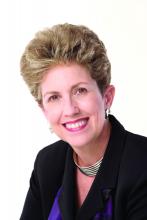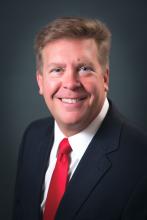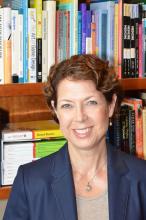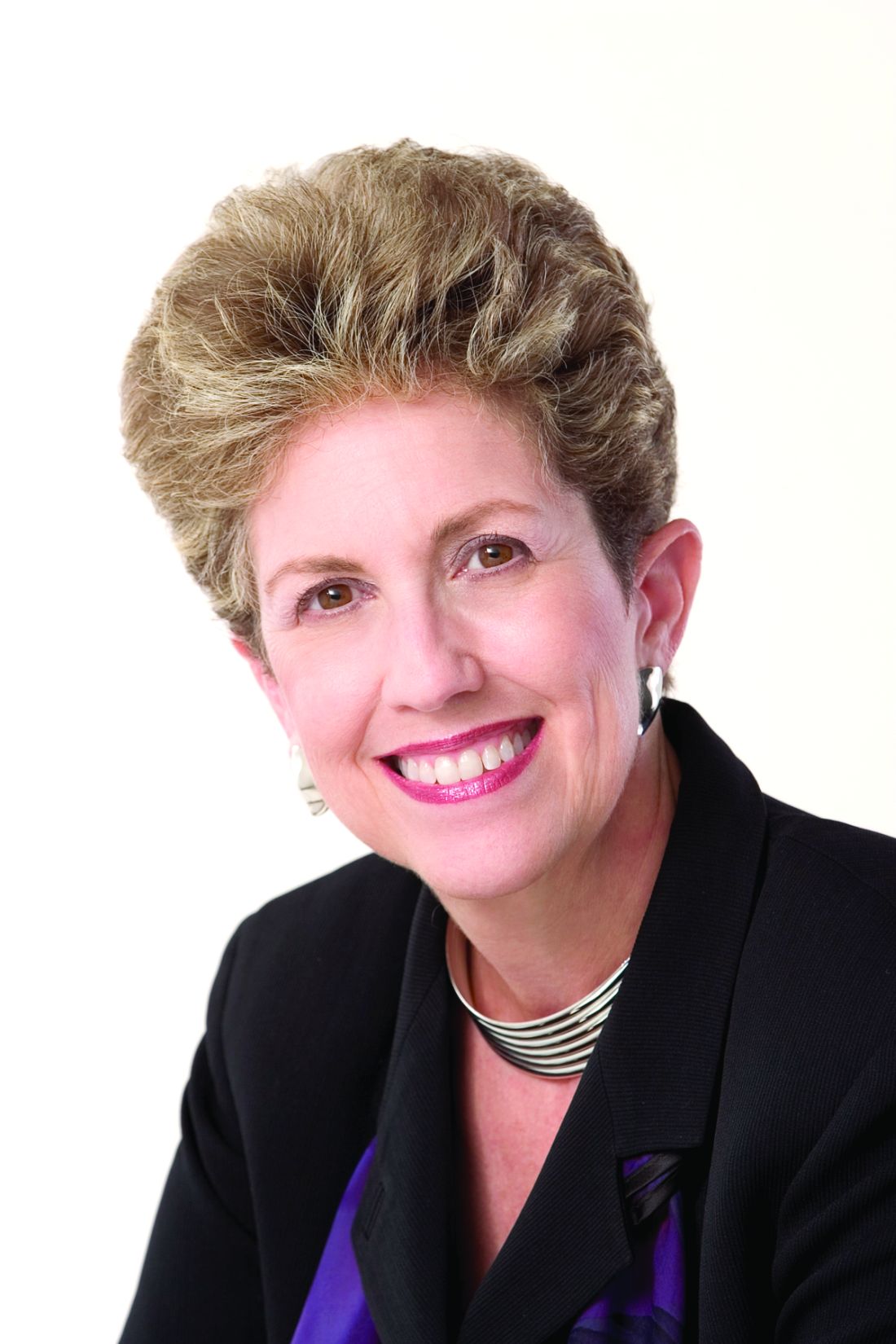User login
For the seventh straight year, the Main Residency Match experienced record growth, with more spots for residency programs and a higher number of slots filled than ever before.
A total of 38,376 applicants in 2019 submitted program choices for 35,185 positions, a 6% slot increase from 2018, while the number of available first-year (PGY-1) positions rose to 32,194, an increase of 6.5% (1,962) from 2018, according to data from the National Resident Matching Program (NRMP). Of the total PGY-1 positions offered, 95% were filled.
“Many of the programs previously accredited by the American Osteopathic Association came into our match this year because they’re now accredited by the [The Accreditation Council for Graduate Medical Education],” Ms. Signer said in an interview. “That contributed to a significant increase in physicians and a significant increase in the number of applicants.”
Family medicine residency programs offered 4,107 positions this year, up by 478 from 2018. Of the family medicine offerings, 93% positions were filled, and 39% were filled with U.S. allopathic seniors. The number of U.S. allopathic seniors matching to family medicine decreased in 2019; however, a record 986 osteopathic students matched to family medicine, accounting for 26% of all applicants who matched to the specialty.
Internal medicine programs offered 8,116 positions in 2019, 574 more than in 2018. Of internal medicine programs, 97% of the positions were filled and 42% were filled with U.S. allopathic seniors. The NRMP notes the percentage of internal medicine positions filled by U.S. allopathic seniors has declined every year since 2015.
Pediatrics programs offered 2,847 residency positions in 2019, an increase of 79 from 2018. Nearly 98% of the slots were filled, and 60% were filled with U.S. allopathic seniors.
Clifton Knight, MD, vice president for education at the American Academy of Family Physicians, said he was pleased to see that the overall number of family medicine residency matches increased this year. However, he expressed concern that the number of U.S. allopathic seniors who applied to family medicine residencies continued to go down.
“That should be a big red flag for everyone at a time [when] it’s important to grow the family medicine workforce because of the increasing needs for family physicians,” Dr. Knight said in an interview. “We need more folks to choose family medicine. We applaud those schools that are producing higher levels of family physicians, but we are concerned there are a lot of schools that the academic environment is not supportive of family medicine. We would like to see a greater emphasis on improving that academic environment to support family medicine at all medical schools.”
Davoren Chick, MD, senior vice president for medical education at the American College of Physicians, said she found the 7.5% increase in internal medicine residency program slots reassuring, and she noted that internal medicine remains the largest field in the match.
“Internal medicine clearly continues to grow because institutions and applicants believe in the value of internal medicine in terms of how it contributes to the overall health care workforce,” Dr. Chick said in an interview.
However, the ACP would like to see a greater number of internists who remain within general internal medicine at the end of their residency, Dr. Chick said. ACP data shows only 11% of third-year residents in internal medicine training programs plan a career in general internal medicine, she added, a percentage that has continued to fall over the last 20 years.
“While we are very happy to see growth and interest in very essential areas of subspecialty internal medicine [and] growing interest in hospital-based careers in internal medicine, we do feel we need to continue advocating for the practice environment needs of generalists across the primary care spectrum,” Dr. Chick said.
Twitter was abuzz with celebratory tweets and photos under the hashtag #MatchDay in the days leading up to March 15 and after official assignments were revealed.
Kyle Yasuda, MD, president for the American Academy of Pediatrics tweeted his congratulations to students matching to pediatric residency programs.
“Being a pediatrician is rewarding beyond words because we #PutKids1st,” he tweeted. “Welcome.”
Supportive tweets also were sent to those who did not match, including an uplifting tweet by Jenny Wang, a fourth-year medical student in New York who matched this year to a dermatology residency at the University of California, Davis. In her tweet, Ms. Wang wrote that in 2018, she applied but did not match, which she described as the “worst feeling in the world.”
“Take some time to heal and ignore the world,” Ms. Wang tweeted, sharing a blog she wrote about not matching. “Just know that when you’re ready, there is a path ahead, and you don’t have to walk it alone.”
For the seventh straight year, the Main Residency Match experienced record growth, with more spots for residency programs and a higher number of slots filled than ever before.
A total of 38,376 applicants in 2019 submitted program choices for 35,185 positions, a 6% slot increase from 2018, while the number of available first-year (PGY-1) positions rose to 32,194, an increase of 6.5% (1,962) from 2018, according to data from the National Resident Matching Program (NRMP). Of the total PGY-1 positions offered, 95% were filled.
“Many of the programs previously accredited by the American Osteopathic Association came into our match this year because they’re now accredited by the [The Accreditation Council for Graduate Medical Education],” Ms. Signer said in an interview. “That contributed to a significant increase in physicians and a significant increase in the number of applicants.”
Family medicine residency programs offered 4,107 positions this year, up by 478 from 2018. Of the family medicine offerings, 93% positions were filled, and 39% were filled with U.S. allopathic seniors. The number of U.S. allopathic seniors matching to family medicine decreased in 2019; however, a record 986 osteopathic students matched to family medicine, accounting for 26% of all applicants who matched to the specialty.
Internal medicine programs offered 8,116 positions in 2019, 574 more than in 2018. Of internal medicine programs, 97% of the positions were filled and 42% were filled with U.S. allopathic seniors. The NRMP notes the percentage of internal medicine positions filled by U.S. allopathic seniors has declined every year since 2015.
Pediatrics programs offered 2,847 residency positions in 2019, an increase of 79 from 2018. Nearly 98% of the slots were filled, and 60% were filled with U.S. allopathic seniors.
Clifton Knight, MD, vice president for education at the American Academy of Family Physicians, said he was pleased to see that the overall number of family medicine residency matches increased this year. However, he expressed concern that the number of U.S. allopathic seniors who applied to family medicine residencies continued to go down.
“That should be a big red flag for everyone at a time [when] it’s important to grow the family medicine workforce because of the increasing needs for family physicians,” Dr. Knight said in an interview. “We need more folks to choose family medicine. We applaud those schools that are producing higher levels of family physicians, but we are concerned there are a lot of schools that the academic environment is not supportive of family medicine. We would like to see a greater emphasis on improving that academic environment to support family medicine at all medical schools.”
Davoren Chick, MD, senior vice president for medical education at the American College of Physicians, said she found the 7.5% increase in internal medicine residency program slots reassuring, and she noted that internal medicine remains the largest field in the match.
“Internal medicine clearly continues to grow because institutions and applicants believe in the value of internal medicine in terms of how it contributes to the overall health care workforce,” Dr. Chick said in an interview.
However, the ACP would like to see a greater number of internists who remain within general internal medicine at the end of their residency, Dr. Chick said. ACP data shows only 11% of third-year residents in internal medicine training programs plan a career in general internal medicine, she added, a percentage that has continued to fall over the last 20 years.
“While we are very happy to see growth and interest in very essential areas of subspecialty internal medicine [and] growing interest in hospital-based careers in internal medicine, we do feel we need to continue advocating for the practice environment needs of generalists across the primary care spectrum,” Dr. Chick said.
Twitter was abuzz with celebratory tweets and photos under the hashtag #MatchDay in the days leading up to March 15 and after official assignments were revealed.
Kyle Yasuda, MD, president for the American Academy of Pediatrics tweeted his congratulations to students matching to pediatric residency programs.
“Being a pediatrician is rewarding beyond words because we #PutKids1st,” he tweeted. “Welcome.”
Supportive tweets also were sent to those who did not match, including an uplifting tweet by Jenny Wang, a fourth-year medical student in New York who matched this year to a dermatology residency at the University of California, Davis. In her tweet, Ms. Wang wrote that in 2018, she applied but did not match, which she described as the “worst feeling in the world.”
“Take some time to heal and ignore the world,” Ms. Wang tweeted, sharing a blog she wrote about not matching. “Just know that when you’re ready, there is a path ahead, and you don’t have to walk it alone.”
For the seventh straight year, the Main Residency Match experienced record growth, with more spots for residency programs and a higher number of slots filled than ever before.
A total of 38,376 applicants in 2019 submitted program choices for 35,185 positions, a 6% slot increase from 2018, while the number of available first-year (PGY-1) positions rose to 32,194, an increase of 6.5% (1,962) from 2018, according to data from the National Resident Matching Program (NRMP). Of the total PGY-1 positions offered, 95% were filled.
“Many of the programs previously accredited by the American Osteopathic Association came into our match this year because they’re now accredited by the [The Accreditation Council for Graduate Medical Education],” Ms. Signer said in an interview. “That contributed to a significant increase in physicians and a significant increase in the number of applicants.”
Family medicine residency programs offered 4,107 positions this year, up by 478 from 2018. Of the family medicine offerings, 93% positions were filled, and 39% were filled with U.S. allopathic seniors. The number of U.S. allopathic seniors matching to family medicine decreased in 2019; however, a record 986 osteopathic students matched to family medicine, accounting for 26% of all applicants who matched to the specialty.
Internal medicine programs offered 8,116 positions in 2019, 574 more than in 2018. Of internal medicine programs, 97% of the positions were filled and 42% were filled with U.S. allopathic seniors. The NRMP notes the percentage of internal medicine positions filled by U.S. allopathic seniors has declined every year since 2015.
Pediatrics programs offered 2,847 residency positions in 2019, an increase of 79 from 2018. Nearly 98% of the slots were filled, and 60% were filled with U.S. allopathic seniors.
Clifton Knight, MD, vice president for education at the American Academy of Family Physicians, said he was pleased to see that the overall number of family medicine residency matches increased this year. However, he expressed concern that the number of U.S. allopathic seniors who applied to family medicine residencies continued to go down.
“That should be a big red flag for everyone at a time [when] it’s important to grow the family medicine workforce because of the increasing needs for family physicians,” Dr. Knight said in an interview. “We need more folks to choose family medicine. We applaud those schools that are producing higher levels of family physicians, but we are concerned there are a lot of schools that the academic environment is not supportive of family medicine. We would like to see a greater emphasis on improving that academic environment to support family medicine at all medical schools.”
Davoren Chick, MD, senior vice president for medical education at the American College of Physicians, said she found the 7.5% increase in internal medicine residency program slots reassuring, and she noted that internal medicine remains the largest field in the match.
“Internal medicine clearly continues to grow because institutions and applicants believe in the value of internal medicine in terms of how it contributes to the overall health care workforce,” Dr. Chick said in an interview.
However, the ACP would like to see a greater number of internists who remain within general internal medicine at the end of their residency, Dr. Chick said. ACP data shows only 11% of third-year residents in internal medicine training programs plan a career in general internal medicine, she added, a percentage that has continued to fall over the last 20 years.
“While we are very happy to see growth and interest in very essential areas of subspecialty internal medicine [and] growing interest in hospital-based careers in internal medicine, we do feel we need to continue advocating for the practice environment needs of generalists across the primary care spectrum,” Dr. Chick said.
Twitter was abuzz with celebratory tweets and photos under the hashtag #MatchDay in the days leading up to March 15 and after official assignments were revealed.
Kyle Yasuda, MD, president for the American Academy of Pediatrics tweeted his congratulations to students matching to pediatric residency programs.
“Being a pediatrician is rewarding beyond words because we #PutKids1st,” he tweeted. “Welcome.”
Supportive tweets also were sent to those who did not match, including an uplifting tweet by Jenny Wang, a fourth-year medical student in New York who matched this year to a dermatology residency at the University of California, Davis. In her tweet, Ms. Wang wrote that in 2018, she applied but did not match, which she described as the “worst feeling in the world.”
“Take some time to heal and ignore the world,” Ms. Wang tweeted, sharing a blog she wrote about not matching. “Just know that when you’re ready, there is a path ahead, and you don’t have to walk it alone.”



